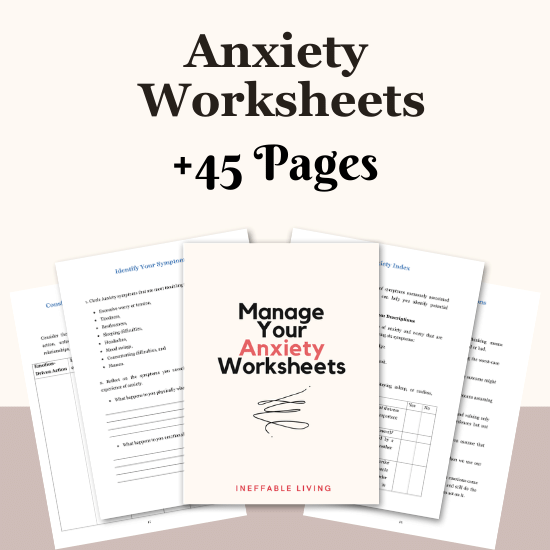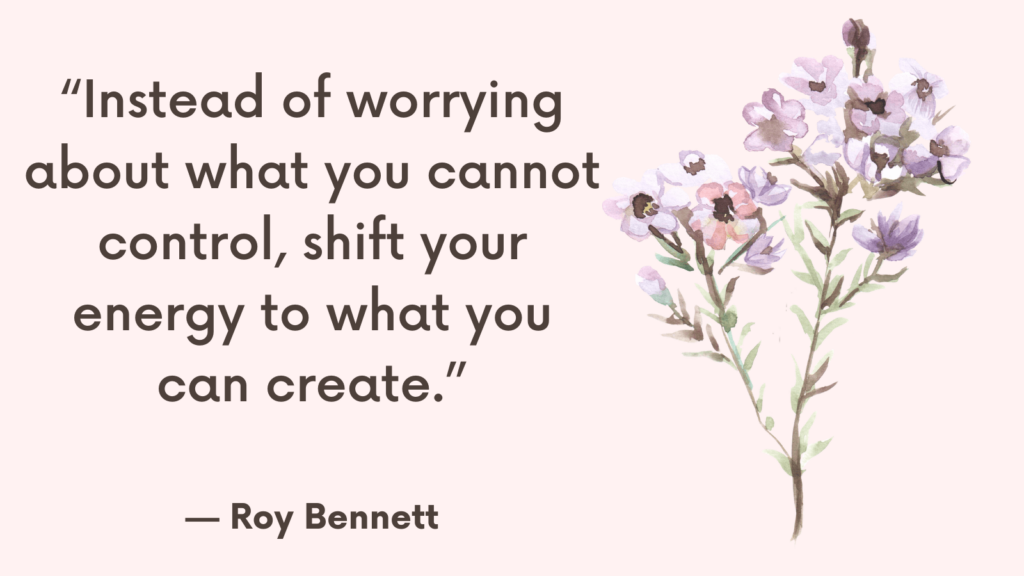In today’s world, anxiety management often revolves around coping mechanisms and stress relief techniques. However, in some cases, the real solution lies in addressing the underlying problems.
In this post, we’ll explore the powerful approach of solving actual problems rather than merely managing anxiety symptoms.
Anxiety as a Messenger
Anxiety functions like a smoke alarm, signaling danger.
Ignoring or merely silencing it doesn’t resolve the underlying issue.
Instead of solely focusing on coping strategies, it’s crucial to listen to what anxiety is trying to tell us and take appropriate actions to solve the actual problems.
Practical Steps to Break the Anxiety Cycle
1. Identify the Real Problem
The first step in breaking the anxiety cycle is to identify the root cause of your anxiety.
Anxiety often stems from specific issues or stressors in your life, which may not always be immediately apparent.
Take some time to reflect on your thoughts and feelings. Ask yourself questions such as:
– What specific situations trigger my anxiety?
– Are there certain people or environments that make me feel anxious?
– What underlying fears or concerns do I have?
By pinpointing the real problem, you can address it directly rather than just managing the symptoms of anxiety.
Understanding the root cause allows you to develop more targeted and effective coping strategies.
Related: 10 Tips on Overcoming Anticipatory Anxiety
2. Write Down the Problems
Once you have identified the real problems causing your anxiety, write them down.
Journaling can be a powerful tool for managing anxiety. When you write down your problems, you externalize your thoughts, which can help you gain perspective and clarity.
Here’s how to make the most of this practice:
– Detail the Issues: Write down each problem in detail. Describe how it makes you feel, why it concerns you, and any associated thoughts or fears.
– Break It Down: For each problem, break it down into smaller, more manageable parts. This can make the issues seem less overwhelming and more solvable.
– Reflect on Solutions: Write down potential solutions or steps you can take to address each part of the problem. This can help you feel more in control and proactive.
Journaling not only helps in organizing your thoughts but also serves as a therapeutic outlet for expressing emotions.
Related: How To Date With Anxiety (Or Any Other Mental Health Issue)?
3. Visualize Positive Outcomes
Visualization is a powerful technique for reducing anxiety and promoting a positive mindset.
By imagining positive outcomes, you can train your brain to focus on success rather than failure. Here are some tips for effective visualization:
– Sit in a comfortable, quiet place where you won’t be disturbed.
– Close your eyes and take a few deep breaths to relax.
– Visualize yourself successfully handling the situations that cause you anxiety. Picture yourself feeling confident, calm, and in control.
– Engage all your senses in the visualization. Imagine what you see, hear, feel, and even smell in the positive scenario.
Regular visualization can help reduce anxiety by creating a mental blueprint for success and boosting your confidence.
Related: Top 10 Practical CBT Exercises For Generalized Anxiety Disorder Relief
4. Overcome Mental Blocks
Mental blocks can hinder your ability to manage anxiety effectively.
These blocks may include negative self-talk, limiting beliefs, and cognitive distortions.
To overcome these mental blocks, consider the following strategies:
– Challenge Negative Thoughts: When you notice negative thoughts, challenge their validity. Ask yourself if there is evidence to support these thoughts and if there are alternative, more positive perspectives.
– Reframe Limiting Beliefs: Identify any limiting beliefs you hold about yourself or your abilities. Reframe these beliefs into more empowering statements. For example, change “I can’t handle this” to “I am capable of managing this situation.”
– Practice Self-Compassion: Be kind to yourself. Recognize that everyone experiences anxiety and that it’s okay to seek help and take time to work through it.
By addressing mental blocks, you can cultivate a more positive and resilient mindset.
Related: High Functioning Anxiety Test (& How To Support Anxiety Recovery)
5. Get Support
Seeking support from others is crucial in managing anxiety.
– Talk to Friends and Family: Share your feelings with trusted friends or family members. They can offer emotional support, understanding, and practical advice.
– Join Support Groups: Consider joining a support group for people with anxiety. These groups provide a safe space to share experiences and learn from others facing similar challenges.
– Seek Professional Help: A mental health professional, such as a therapist or counselor, can provide valuable tools and strategies for managing anxiety. They can also help you work through underlying issues and develop coping mechanisms.
Having a support system can provide reassurance, reduce feelings of isolation, and offer new perspectives on managing anxiety.
Related: Best 7 Somatic Exercises For Anxiety
6. Adopt a Growth Mindset
A growth mindset, as opposed to a fixed mindset, is the belief that abilities and intelligence can be developed through effort and learning.
Adopting a growth mindset can significantly impact how you handle anxiety:
– Embrace Challenges: View challenges as opportunities for growth rather than obstacles. Recognize that overcoming anxiety is a process that involves learning and effort.
– Learn from Setbacks: Instead of seeing setbacks as failures, see them as valuable learning experiences. Reflect on what you can learn from each situation and how you can apply this knowledge in the future.
– Celebrate Progress: Acknowledge and celebrate your progress, no matter how small. Each step forward is a victory and a sign of growth.
A growth mindset can help you stay motivated and resilient in the face of anxiety.
Related: 8 Signs You Are Recovering From Anxiety
7. Take Action
Taking action is crucial in breaking the anxiety cycle.
While understanding and planning are important, action is what ultimately leads to change. Here’s how to take effective action:
– Set Small Goals: Break down your overall goals into smaller, manageable steps. This makes it easier to take action and track progress.
– Prioritize Tasks: Identify the most important tasks that will have the biggest impact on your anxiety. Focus on these tasks first.
– Create a Routine: Establish a daily routine that includes time for self-care, relaxation, and activities that bring you joy.
– Stay Consistent: Consistency is key to making lasting changes. Commit to taking small steps every day toward managing your anxiety.
Related: How To Stop Self-Critical Thoughts Using These Top 10 Techniques

Conclusion
Managing anxiety by merely coping with symptoms can sometimes lead to a never-ending cycle of stress.
By identifying and solving the root causes of our anxiety, we can break this cycle and achieve lasting peace and well-being.
Remember, anxiety is often a sign that something in your life needs attention and action.
Face the problems head-on, learn from them, and take steps towards a healthier, anxiety-free life.



